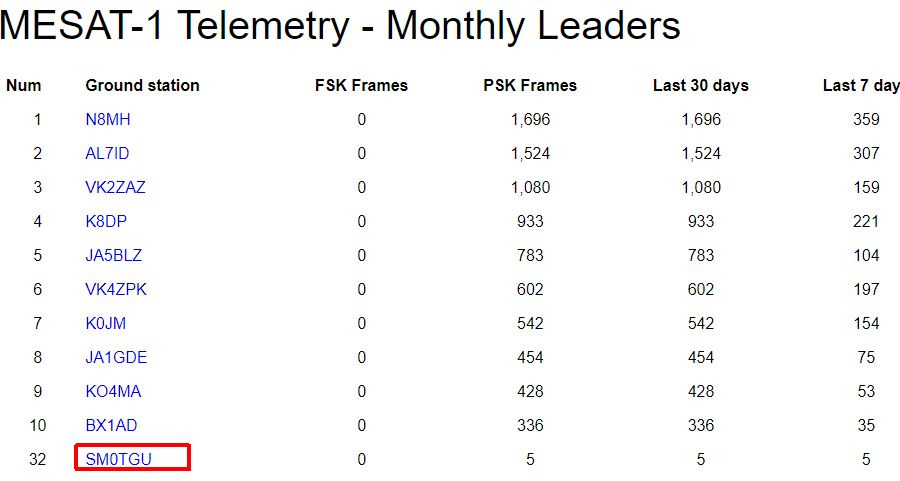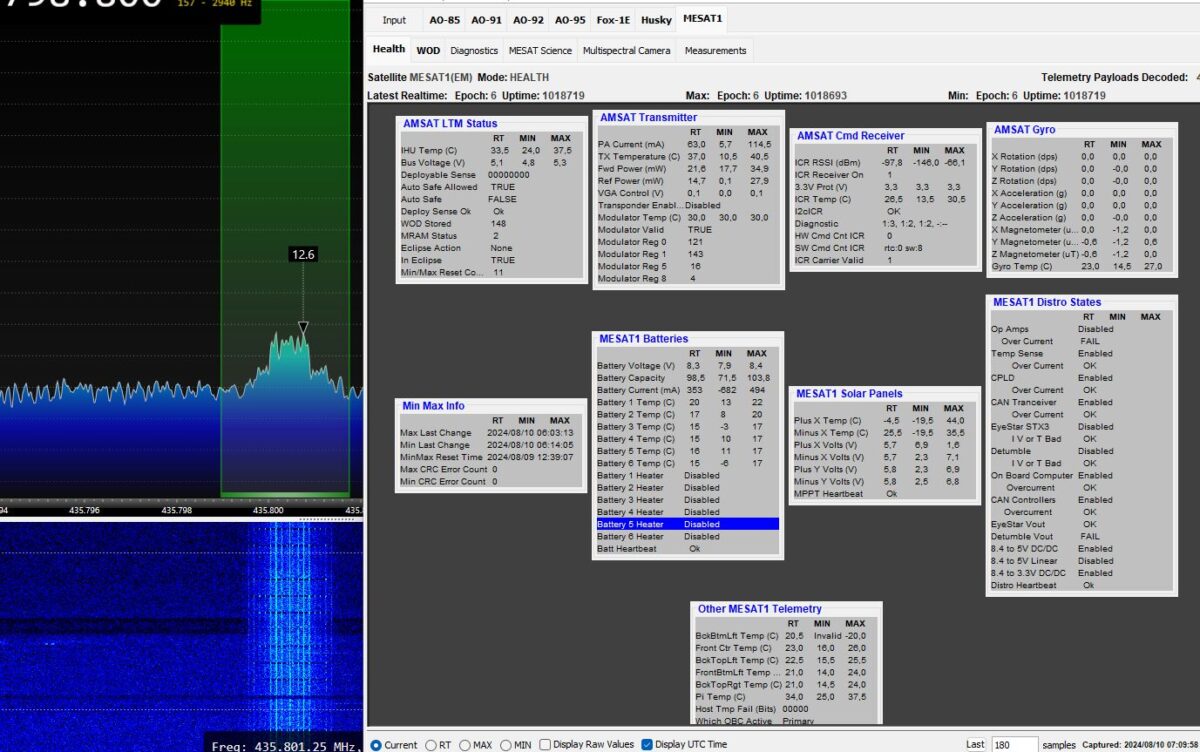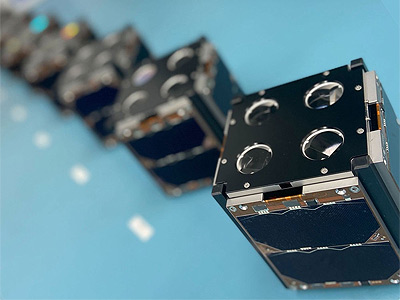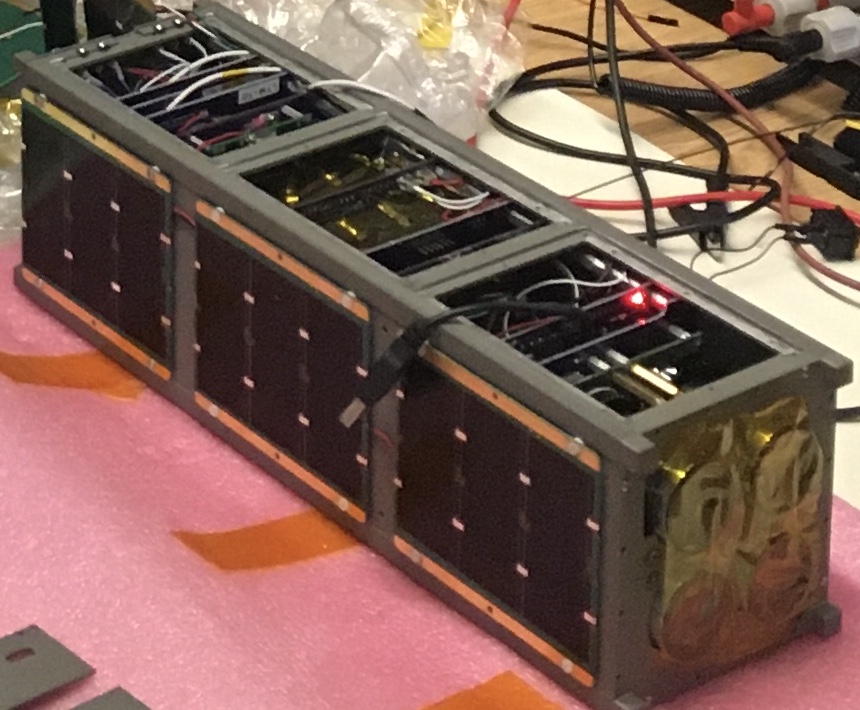Received with 13 el LFA X-yagi, Mini-70 LNA, #airspy Mini, SDR-Console v3

Webmaster and member of the AMSAT-SM steering group.

Post- och telestyrelsen har skickat ut ett förslag på nya undantags-föreskrifter på remiss. SSA har skrivit ett remissvar på detta.
Glädjande är att SSA föreslår höjning av effektgränsen på 2.4 GHz och där QO-100 pekas ut specifikt som anledning.
Läs mer här:
https://www.ssa.se/ssa-svarar-pa-pts-remiss-om-nya-undantagsforeskrifter/
Hela remissvaret:
https://www.ssa.se/wp-content/uploads/2024/08/SSA_Remiss_UFSKR_final.pdf
Del av remisssvaret:
Effektbegränsning för 2400–2450 MHz (3 kap. 185 §)
Frekvensbandet används huvudsakligen för upplänkstrafik till geostationära amatörradiosatelliter (OSCAR 100/Es’hail-2). Nuvarande effektgräns på 100 mW gör att det krävs mycket stora antenner för att
kommunicera med satelliten.
Ser man på våra grannländer så är högsta tillåtna effekt för amatörradio i bandet avsevärt högre, t.ex. tillåter Danmark 250 W1, Norge 100 W2, Finland 150 W CW, 600 W p.e.p.3 och Tyskland 75 W4
I det mycket tätbefolkade Storbritannien har man så sent som 2024 beslutat att behålla effektgränsen 400 W5
I Spanien tillåts ännu högre effekter (EIRP) med förbehållet att användningen är satellittrafik.
Vid satellittrafik används riktantenner med betydande antennvinst riktade uppåt. Risken för störningar från sådana satellitupplänkar på wifi-trafik måste bedömas vara mycket begränsad. SSA ser inte någon rimlig förklaring till vilka unika förhållanden som råder i Sverige, som gör att PTS bedömning så kraftigt avviker från kollegornas i våra grannländer.
SSA önskar
• I första hand att den högsta tillåtna tillförda effekten i delbandet 2400–2410 MHz ökas till 100 W p.e.p.
• I andra hand att den högsta tillåtna tillförda effekten för satellittrafik i delbandet 2400–2401 MHz ökas
till 10 W p.e.p.

On June 29, 2024, the fourth QO-100 Usermeeting took place in Friedrichshafen as part of the Ham-Radio Messe 2024 in a tried and tested environment. This year’s theme was “Roving” and thus perfectly matched the motto of the Ham-Radio amateur radio exhibition “Islands on the Air”.

From ANS-203:
The Tevel series of satellites is approaching re-entry, with Tevel-5 already re-entering on July 18th.
The Tevel mission consists of 8 satellites developed by the Herzliya Science Center in Israel, each carrying an FM transponder. The satellites were built by 8 schools in different parts of Israel and launched in January 2022 on the SpaceX Falcon 9 Transporter-3 mission.
A number of other satellites with amateur radio payloads are also re-entering shortly. A list of satellites approaching re-entry can be found at http://lu7aa.org/decay.asp
[ANS thanks Herzliya Science Center, AMSAT Argentina, and LU7AA for the above information]
Re-post from ANS-189:
The maiden flight of the new European launcher, Ariane 6, is scheduled for July 9, 2024, with a launch window of 3:00 p.m. to 7:00 p.m. local time from the European spaceport in French Guiana (July 9 20:00h to July 10 00:00h CEST). Among many other payloads, it carries our (inside YPSAT) GENESIS-A module, attached to the second stage of the launcher. The module will transmit FT8 and live SSTV images in Robot 36 format.
FT8 transmissions are made every 16 seconds, while SSTV’s are every 5 minutes.
The working frequencies are as follows:
Downlink 144.175 MHz FT8 Mode:
– Callsign AO4ARI HO60 if the antenna has been deployed
– Callsign AO4ARI HO61 if the antenna has not been deployed
Downlink 144.550 MHz SSTV Robot 36 mode with live image and Hades text
A carrier with a frequency of 144.550 MHz (same frequency as SSTV) is left between FT8 tones.
This information is compiled in PDF in the following document on our web:
https://www.amsat-ea.org/app/download/13458580/AMSAT+EA+-+GENESIS-A+transmissions+description.pdf
The only thing ESA has given us is the trajectory over the ground while flying over Europe, but we don’t have TLEs or anything that we can semi-automate. It is available on our website:
https://www.amsat-ea.org/s/cc_images/cache_19006006.jpg?t=1720182961
It will be very difficult to receive it but we thank you all if you try and if you spread this information to have all possible operators tuned into FT-8 that day. The module will fall into the sea with the second stage after a few hours.
More information about the flight including timings here:
https://www.esa.int/Enabling_Support/Space_Transportation/Ariane/Ariane_6_launch_how_to_watch_and_what_to_look_out_for
[ANS thanks Félix Páez, EA4GQS, AMSAT EA, for the above information]

Re-post from ANS-189:
The Firefly Alpha FLTA005/NASA ELaNa 43 mission, nicknamed “Noise of Summer,” launched successfully at 04:04 UTC on July 4 (Wednesday evening, July 3 in the U.S.) and deployed eight new cube satellites to Low Earth Orbit (LEO). Five of these cubesats carry amateur radio equipment.
The cubesats were placed into a sun-synchronous Earth orbit, meaning that all locations on earth will see high-elevation passes roughly between 8:00 and 10:00 a.m. and between 8:00 and 10:00 p.m. local time daily, with lower elevation passes earlier and later.
Among the newly-deployed satellites, the one of greatest interest to the amateur radio community is MESAT1. Built by the University of Maine, in cooperation with AMSAT, this satellite carries a 30 kHz wide V/U Transponder plus a 1k2 BPSK telemetry downlink. Telemetry downlink 435.800 MHz with transponder downlink 435.810-435.840 MHz, and transponder uplink 145.910-145.940 MHz. Amateurs are encouraged to use AMSAT’s FoxTelem software to collect telemetry.
MESAT1 involves three missions designed by high school students in Maine. The science payloads are climate focused and include ALBEDO, IMAGER, and HAB. These will identify urban heat islands, determine concentration of phytoplankton in water bodies, and help predict harmful algal blooms. Four multispectral cameras on board will relay the data down to University of Maine’s ground station for further processing. Amateurs are encouraged to use AMSAT’s FoxTelem software to collect telemetry and assist in these science projects.
Also deployed was CatSat, a technology demonstration of an inflatable antenna for high-speed communications, built by the University of Arizona. CatSat’s deployable antenna consists of a Mylar balloon. The front half of the balloon is transparent, allowing microwaves to pass through. The back half of the balloon is aluminized, creating a reflecting antenna. After reaching low Earth orbit, CatSat’s antenna will deploy and inflate to a diameter of just over one-and-a-half feet CatSat’s demonstration will be to transmit high-definition Earth photos to 10 GHz, X-band ground stations at ~50 megabits per second.
In addition to images, data about the structure of the Earth’s ionosphere will be gathered by listening-in to thousands of beacons from ground-based ham radio stations. CatSat will relay WSPR and FT8 signals from HF. Downlinks on 437.185 MHz and 10470.00 MHz.
Other satellites with IARU-coordinated amateur frequency downlinks include:
Serenity, which uses a 4k8 FM with AX25 downlink on 437.100 MHz. Serenity was built by Teachers in Space, Inc., a 501(c)(3) nonprofit educational organization in North America that stimulates student interest in science, technology, engineering, and mathematics (STEM). They provide teachers with real space science experiences, space flight opportunities, and industry connections.
KUbeSat-1, revives small satellite research at the University of Kansas and starts a new KUbeSat program that will offer space access to student research. The main payload on KUbeSat-1 is the Primary Cosmic Ray Detector which will use a new method to measure the energy and species of primary cosmic rays hitting the Earth. The secondary payload is the High-Altitude Calibration, (HiCalK) that builds on decades of research surrounding Very High Frequency signals generated by cosmic ray interactions with the atmosphere. UHF downlink using 9k6 GMSK. A downlink on 437.085 MHz.
SOC-i (Satellite for Optimal Control and Imaging) is a technology demonstration mission of attitude control technology and a camera that serves as an instrument to demonstrate SOC-i’s pointing abilities. Developed at the University of Washington, SOC-i has a UHF downlink using 4k8 GMSK. downlink 437.125 MHz.
[ANS thanks NASA, Firefly Aerospace, and Spacflight Now for the above information]